
Matcha Royal
Service Design
Team Project with Yixun Wang, Xusheng Hu
Sponsor ROYAL TEA COMPANY(China)
04.2016 - 06.2016
We facilitated Shaoxing Royal Tea company to better understand customers’ and villagers’ needs in order to design a tourist experience to revitalise the local economy and bring urban workers back to Royal Tea Village.
The outcome is Royal Matcha, a new brand and sustainable tourist service model.
Introduction
When I first arrived at Royal Tea Village in Shaoxing, it looked empty. Its population has dwindled to 46 people – among them just seven children – and the large Royal Tea company is, along with some workers, all that remains of the village’s turn-of-the-20th-century glories.
Urbanisation drains small, rural villages of their populations, as parents leave their children behind in order to provide better opportunities for them.
Project Brief
Royal Tea Company, the largest Matcha tea manufacturer in China, is transforming the village to an industrial tour resort, where its tea plantation and manufacturing lines are located. But its attempt failed.
- The attempt to transform Matcha manufacturing lines to industrial tour met a cold shoulder in the market test.
- Affiliated Matcha dessert brand Breaker landed itself in trouble getting customers and increasing sells after a large amount of advertising investment.
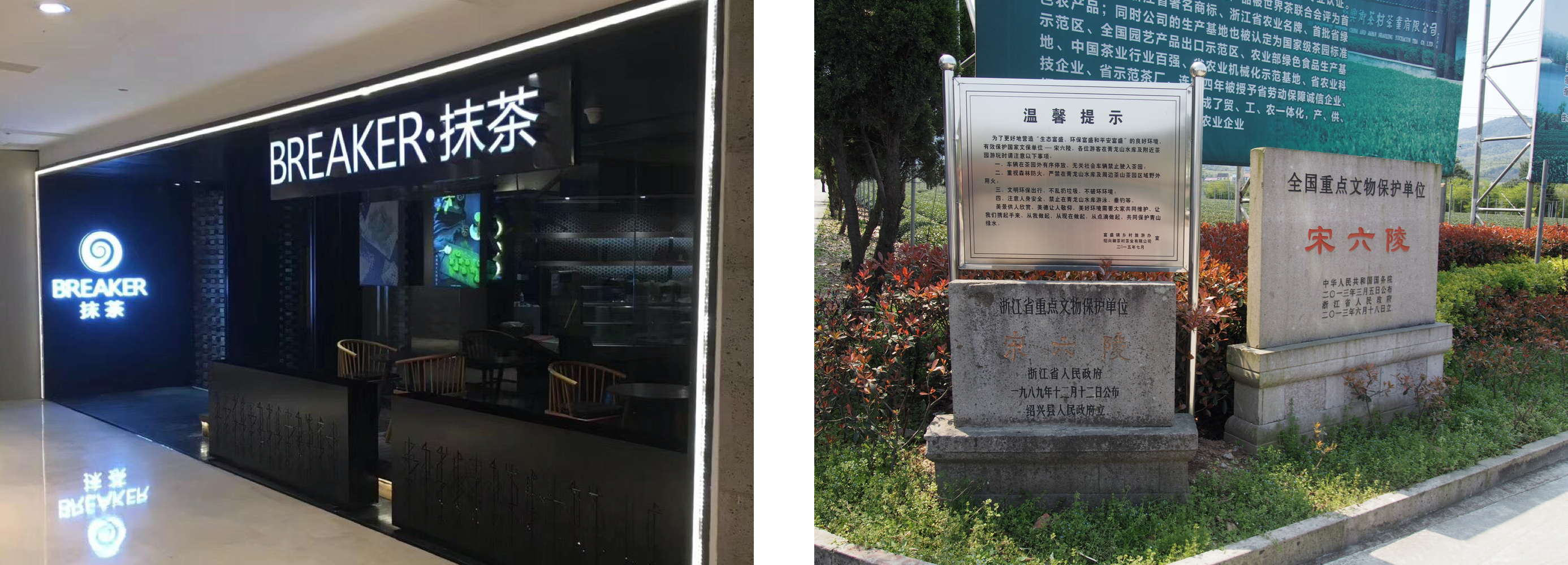
Royal Tea Village is facing threats.
- More than 86% of young labours are choosing to work in big cities in order to strive for a better life.
- Local simple economic structure is greatly challenged. The main source of income for villagers is Royal Tea factory, from tea harvesting to tea packing.
- With the location of Six Tombs of Song Dynasty, the village enjoys rich historical culture which is on the edge of extinction and need to be revived.
“Royal Tea is calling for a change.”
Field Research 1: Understanding Royal Tea Village
Royal Tea Company wants to develop the factory tour, and we realised early on that only designing more activities in the factory is not where we could deliver the most value. Therefore, our group focused more on the expectations of travellers and how Royal Tea could adapt both the factory tour and larger customer journey to respond to their needs.
Research Environments
In the Tea Royal Village, we conducted field research including service safari, in-factory interviews, in-home interviews, group sessions and staffs’ dormitory visit. Participants include villagers, staffs in the factory and Yucha Mountain Villa, their boss and sales.

Royal Tea’s advantages
Royal Tea is endowed with abundant tourism resources, rooted in the history and Matcha. And staffs have a sense of ownership. But it lacks the experience provided for travellers.

“The Royal Tea is near Six Tombs of Song Dynasty. It’s a great place for enjoying tea with warm welcome from the staffs. Recommend to drive there. ”
— Luo wrote about his trip in Royal Tea village.
Royal Tea’s disadvantages
- Service and brand gap between the Royal Tea factory and Breaker.
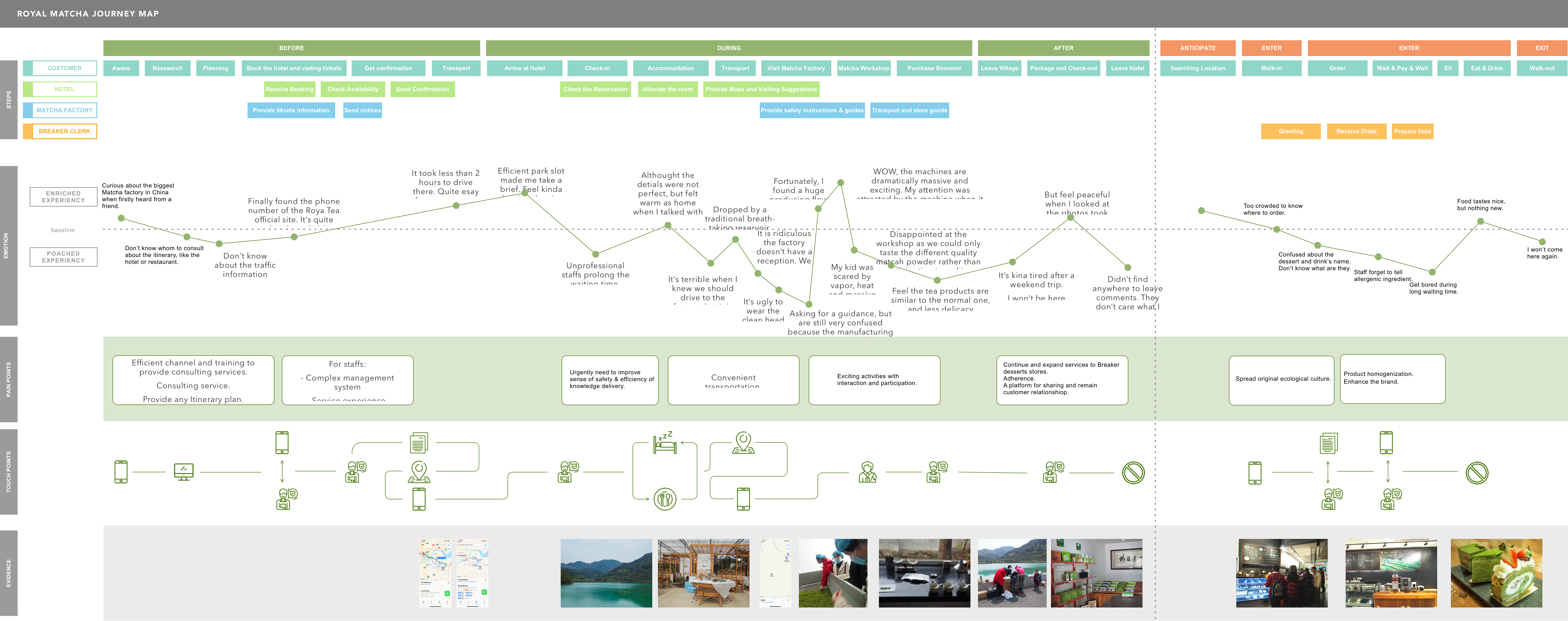
- Serious homogeniseation
Field Research 2: Understanding City Escape Weekend Travellers
From a combination of secondary and primary research insights, we developed 4 attitudinal personas, traveling in various contexts. Through this, we have seen combining the motivation, expectations and value is important to provide a seamless service and relationship.
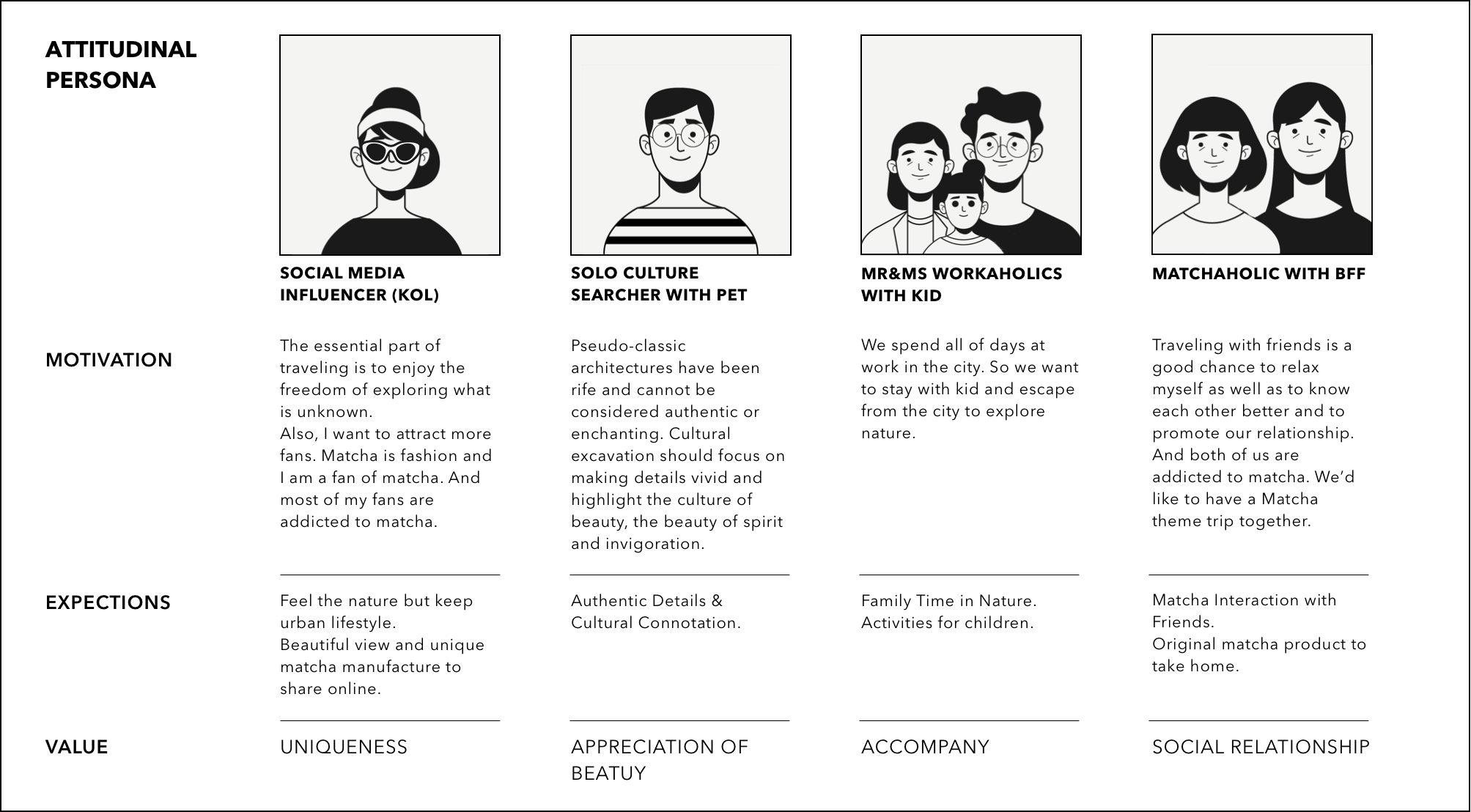
Using the strategy of breaking a character into functional, emotional(feeling), and social(perceiving) needs, we minded our characters for key themes.

Take-aways
Customers rarely use official site or tranditional advertising avenues to learn about.
Expect real-time, message-based communication both before and during stay.
Seek personalisation and are willing to pay more for it/share a bit about themselves to get it.
First impression on a brand is very important.
Millennials and younger “digital natives” are far from a homogenous group. Physical touch-points and artefacts are still important.
Take-away from trip plays an key role during and after the trip, especially influencing the feedback and memory.
Potential Response
Push trailer videos and quirky storytelling in Breaker rather than assuming users will call the hotel directly.
Invest in less traditional forms of assistance(like messaging) because customers are already being exposed to this in basic services.
Proactively gain insight into specific guest missions and preferences, store it, and enable action based upon it.
Build a new life-style brand to change the sterotype on Royal Tea Company as a facotry. Arm guests with high quality content both in the village and Breaker, give them a reason to post in relation to the brand, and enable people to purchase Royal Tea stays and experiences with minimal friction to drive more organic growth and brand awareness.
Gamification and family workshop are motivative interaction of activities in the Royal Tea village.
Make it easier for guests to plan the rest of their day.
Ideation
With all the research, we did a few rounds of affinity mapping to synthesise findings. We then generated a stakeholder map to help us identify the service gap and opportunities
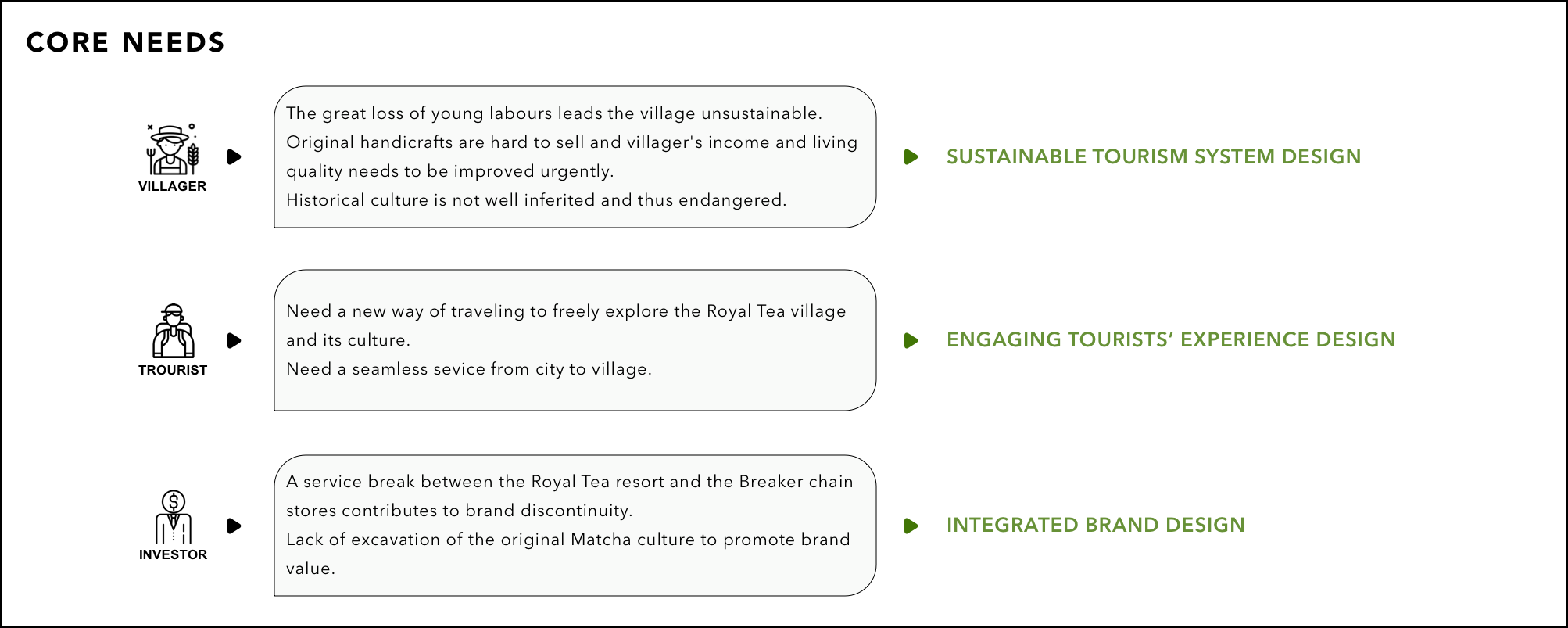
WHAT WE BROUGHT:
- Product Prototypes
- Packaging Prototypes
- Digital Prototypes
- Messaging Concepts
- Business Model Prototypes
- Service Scenarios
With these constraints and insights in mind, we brainstormed hundreds of concepts and quickly prototyped a select few.
Firstly, we assisted Royal Matcha in organising a Matcha Marathon, and we took a chance and transform its relaxing part entirely into a live prototype set. More than 36 travellers and 5 villagers came through and provided feedback. From there, the team was able to make iterations of the concept, evolving the experience in real-time.
- Interview and test the ideas about the digital prototype and the tea bag.
- Organising a Matcha workshop to test tea cultural activities.
- Co-creation with villagers
INTRODUCTION: ROYAL MATCHA - New Brand and Service Model.
Taking the lessons learned from prototyping, we set out to design and build a complete ecosystem to support Royal Matcha. In the front end, we design for tourists’ travelling journey, from hearing about the Royal Matcha in Breaker to travelling in the Royal Matcha village, and finally regard Breaker as a daily routine. In the back end, we care about villager’s living situation improvement. The integrated brand design was paired with an aspirational message to customer: the Royal Matcha is a sustainable system from products to service.
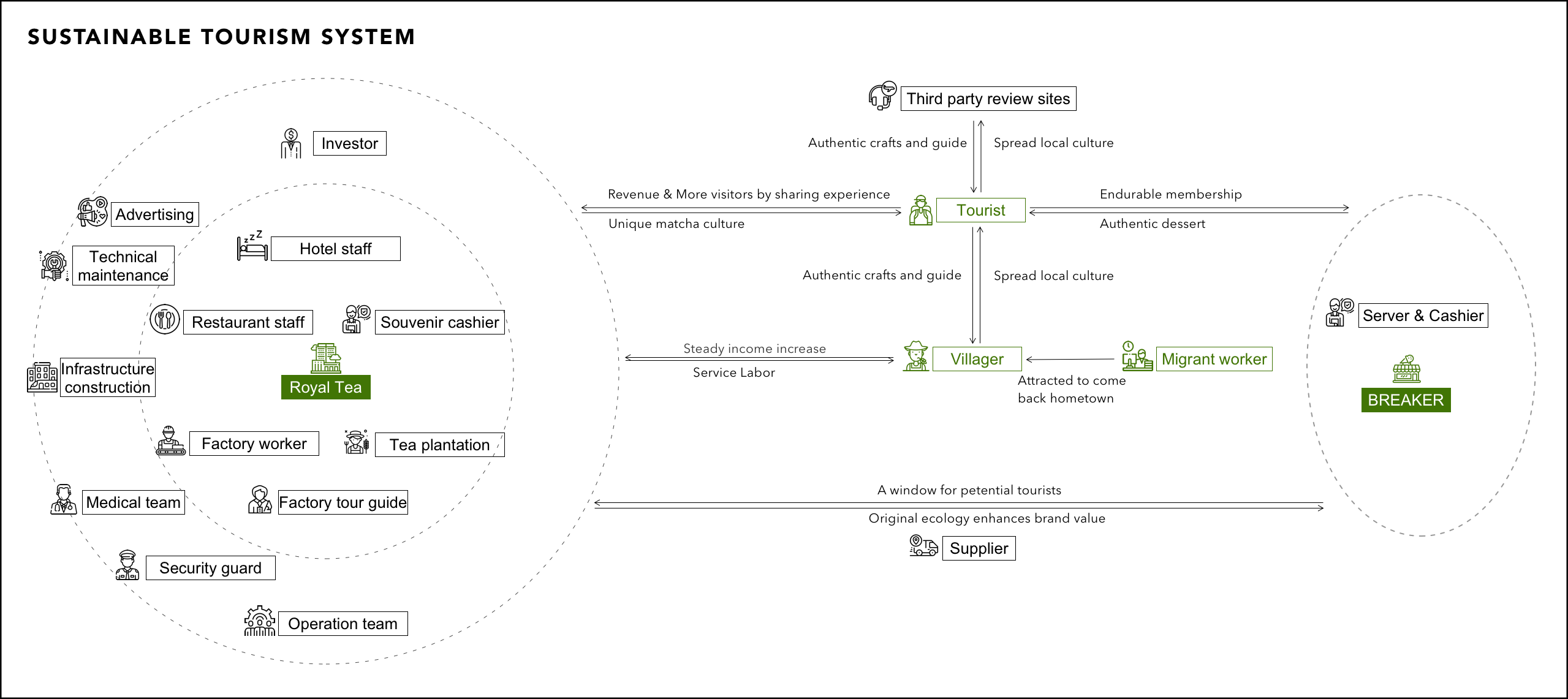
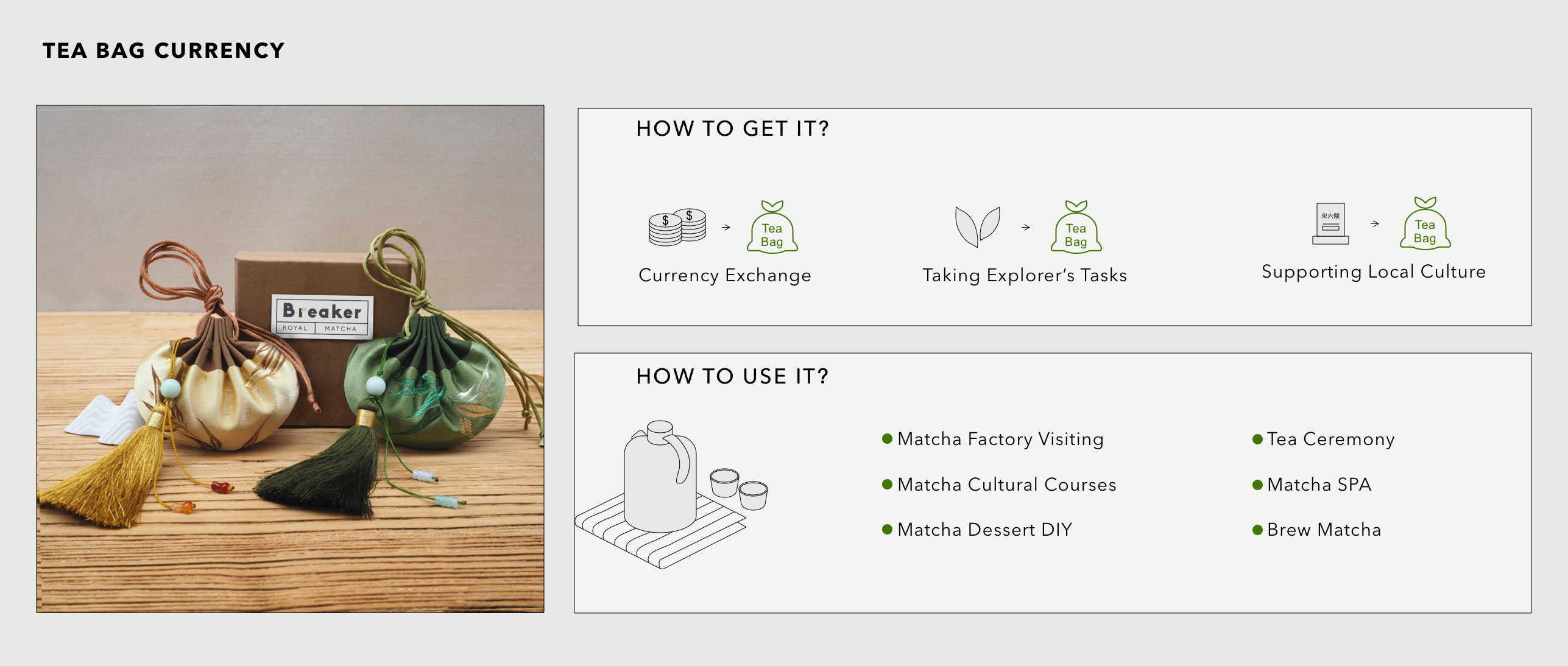
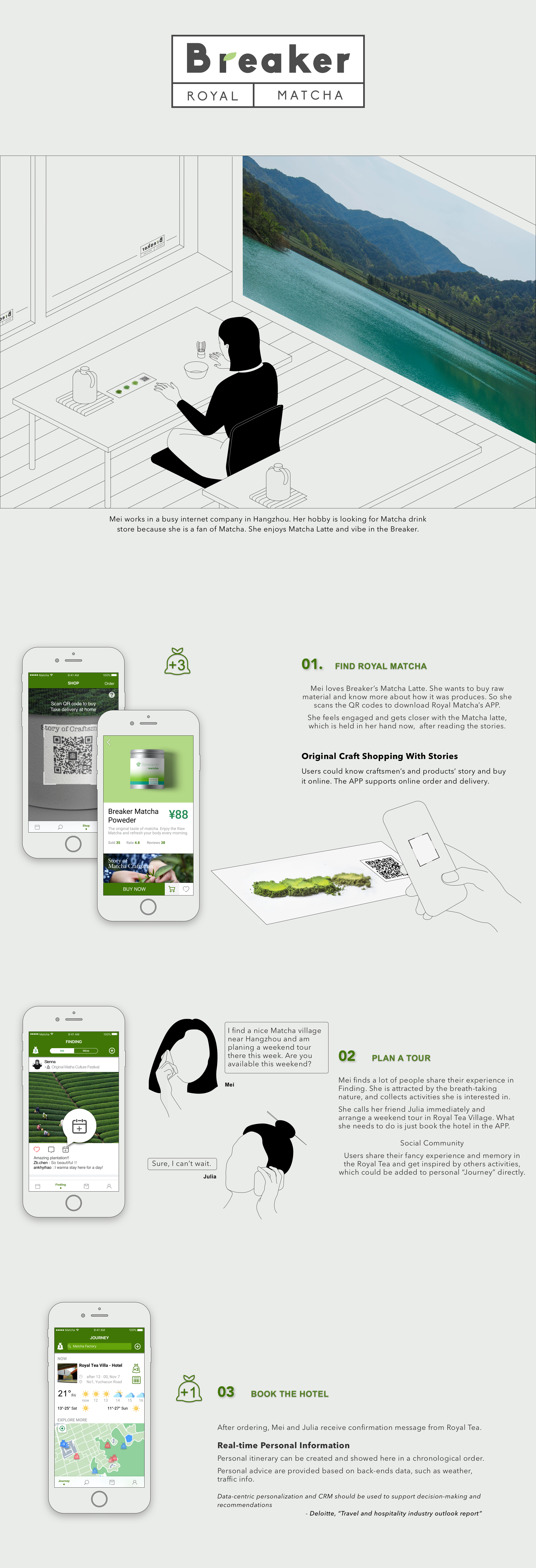
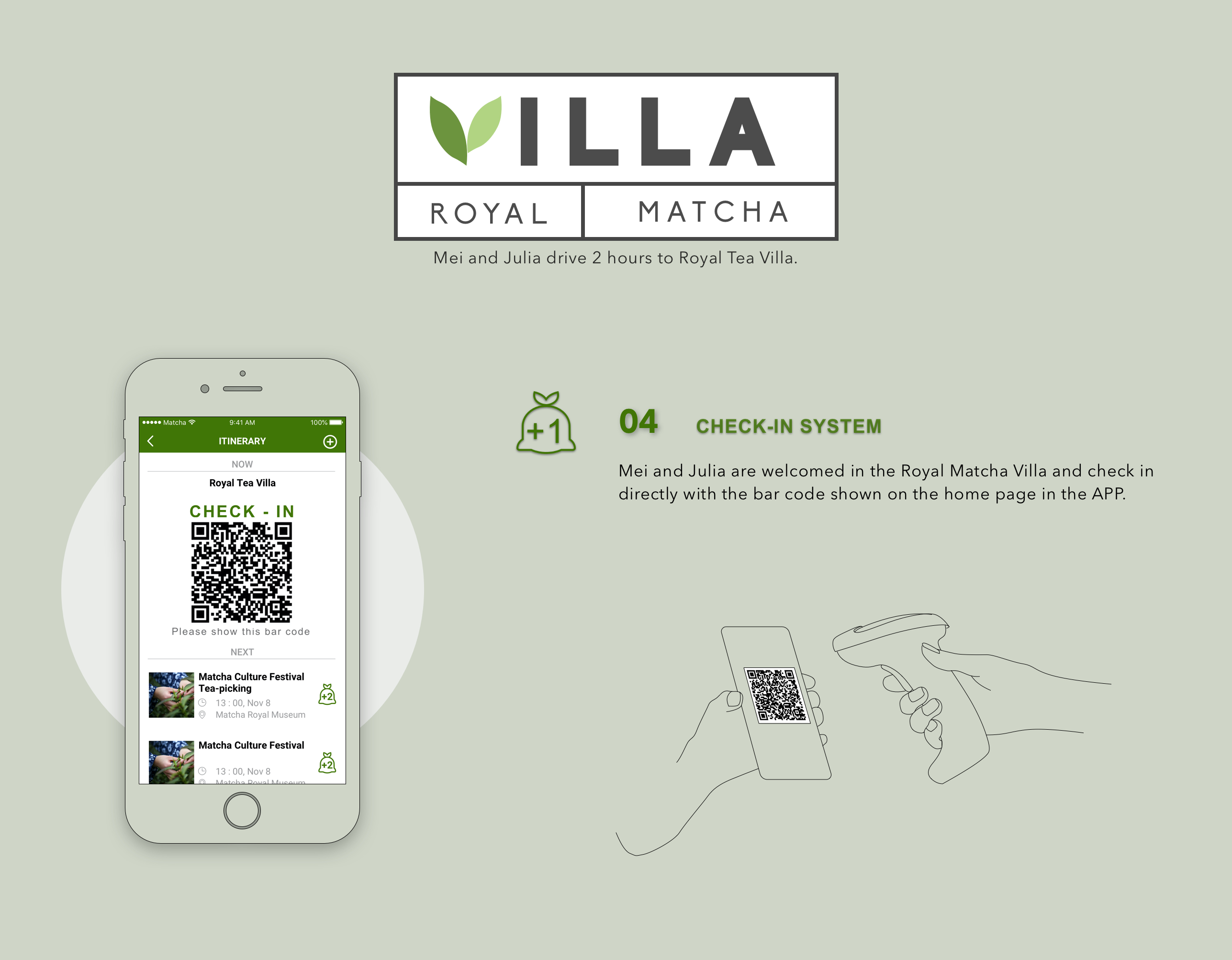

Moving Forward
ROYAL MATCHA is only a start
One year after the project’s completion, more than half of the design concepts have been included in Royal Tea development manifesto. In 2020, these concepts will be rolled out.
The work has also accelerated Royal Tea’s efforts to build an ongoing engagement service.